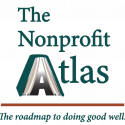7 Steps To Grow A Nonprofit Like A Business

The Business of Nonprofits: Strategies for Sustainable Growth
Nonprofit organizations have long been perceived as fundamentally different from their for-profit counterparts, prioritizing mission over money. However, leading experts argue that integrating sound business principles into nonprofit management is not only advisable but essential for long-term sustainability. By adopting strategic growth models, investing in talent, and diversifying revenue streams, nonprofits can navigate financial uncertainty and enhance their impact.
Investing in People: The Foundation of Success
A common misconception is that nonprofit employees must accept lower compensation in exchange for meaningful work. However, the most effective organizations recognize that their staff is their most valuable asset. Providing competitive salaries, strong benefits, and flexible work arrangements can increase employee engagement and retention. At Public Interest Registry (PIR), a nonprofit managing the .ORG top-level domain, leadership fosters a workplace culture centered on open communication, employee recognition, and work-life balance, ensuring that staff remain engaged and aligned with the organization’s mission.
Experts also stress the importance of psychological safety within nonprofit teams. Leadership must foster an environment where employees feel empowered to voice concerns, challenge norms, and take risks without fear of reprisal. This culture of openness enables organizations to tackle challenges proactively and innovate effectively.
Responsible Growth: Quality Over Quantity
Expansion for expansion’s sake can be a dangerous pitfall. Many nonprofits, eager to scale their impact, pursue aggressive growth strategies that ultimately compromise their core mission. PIR’s experience underscores this lesson. The organization initially relied on deep discounting to drive domain name registrations, only to find that many were being exploited for fraudulent activities. To course-correct, PIR developed a Quality Performance Index (QPI), emphasizing the integrity of registrations over sheer volume. This approach strengthened the organization’s credibility and long-term sustainability.
Nonprofit leaders must ask themselves whether new initiatives align with their mission and whether they possess the resources to execute them effectively. Delivering consistent, high-quality programs over time is a more sustainable strategy than unchecked expansion.
Diversifying Revenue Streams: Reducing Financial Risk
Many nonprofits rely heavily on a single funding source—be it grants, donations, or a major corporate partner. While this approach may provide short-term stability, it leaves organizations vulnerable to economic downturns or shifts in donor priorities. PIR, for instance, once relied predominantly on one partner, a risky dependence that could have threatened its sustainability.
To build resilience, nonprofits must explore multiple revenue streams, such as earned income models, membership programs, and corporate partnerships. By remaining adaptable and responsive to market needs, organizations can safeguard their missions against financial volatility.
Leadership Practices: Intentional Change Management
Borrowing from John Kotter’s change management framework, experts advise nonprofit leaders to establish a sense of urgency, build a guiding coalition, and develop a clear vision for change. Communicating this vision effectively, empowering employees, and generating short-term wins help sustain momentum. John Kotter’s change management framework outlines an eight-step process for successful organizational transformation. It begins with establishing a sense of urgency, followed by forming a guiding coalition and developing a clear vision. Leaders must then communicate the vision, empower employees for action, and generate short-term wins to build momentum. Sustaining acceleration and embedding new approaches into the organization’s culture ensure long-term success. This structured approach helps nonprofits and businesses navigate change effectively by fostering engagement, reducing resistance, and ensuring that improvements become lasting elements of the organization’s operations. Finally, institutionalizing new approaches ensures that the transformation becomes an integral part of the organization’s culture.
Avoiding Disruption: Managing Challenges
Equally crucial is the ability to manage disruptive personalities within an organization. Whether dealing with domineering voices, passive participants, or perpetual skeptics, leadership must address dysfunction quickly to maintain team cohesion. Identifying and mitigating these disruptions fosters a collaborative environment where all voices contribute productively to the mission.
Nonprofit boards, too, must embody best governance practices, ensuring diversity, expertise, and a clear strategic direction. Strong boards enforce equitable policies, maintain high ethical standards, and provide oversight that aligns with the organization’s mission.
Driving Growth: Succession Planning for Stability
A nonprofit’s long-term viability also hinges on succession planning. The departure of a CEO or board chair can significantly impact operations, making it imperative to cultivate future leaders well in advance. Forward-thinking organizations establish formal transition plans, mentorship programs, and leadership pipelines to ensure continuity and prevent disruptions in governance and operations.
Conclusion: The Business Case for Nonprofits
Adopting business-minded strategies does not mean compromising a nonprofit’s values—it enhances its ability to fulfill its mission. By prioritizing staff investment, pursuing responsible growth, diversifying revenue, and employing strong leadership practices, nonprofits can achieve financial sustainability and expand their impact. In an era of increasing economic uncertainty, these principles offer a roadmap for organizations striving to thrive in the long run.
Source: CEO World Magazine and Fast Company
The Nonprofit Atlas connects the dots for any “do-gooders” to do the most good. We provide the roadmap to doing good well. We simplify the work of securing resources, relationships, and best practices that fuel a mission and realize a vision. See us in action with a FREE 30-minute consultation.
